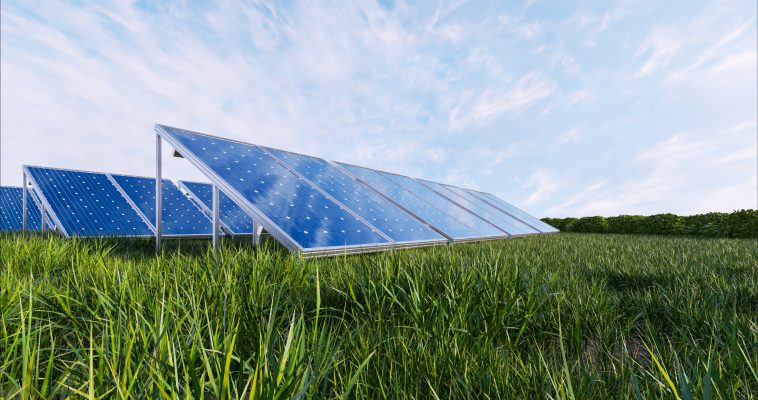The green technology revolution is rapidly advancing in Africa, as governments, businesses, and communities collaborate to find innovative solutions for environmental challenges while fostering sustainable development. Africa’s distinct geographical and economic conditions present a unique opportunity to capitalize on green technology.
Here are key areas where sustainable technology initiatives are making a significant impact:
1. Renewable Energy Expansion
- Solar Power
Initiative: Africa’s abundant sunlight makes solar energy one of the most promising renewable sources. Countries like South Africa, Kenya, and Morocco are making great strides in large scale solar projects.
Examples:
- Ouarzazate Solar Power Station (Morocco): Known as Noor, the world’s largest concentrated solar power (CSP) plant in the Sahara Desert, generates electricity for hundreds of thousands of homes.
- MKOPA Solar (Kenya): A payasyougo solar energy system providing affordable solar power to low income households in East Africa.
Impact: These solar initiatives reduce reliance on fossil fuels, bring energy access to remote regions, and create jobs in the renewable energy sector.
- Wind Energy
Initiative: Wind energy is emerging in areas with high wind potential, such as Kenya, Ethiopia, and South Africa.
Example:
- Lake Turkana Wind Power Project (Kenya): Africa’s largest wind farm, generating 310 MW of electricity and significantly contributing to Kenya’s energy supply.
Impact: Wind energy diversifies the energy mix, lowers greenhouse gas emissions, and enhances energy security.
- Hydropower
Initiative: Africa’s rivers offer vast potential for hydropower development. Countries like Ethiopia, Zambia, and the Democratic Republic of Congo (DRC) are leveraging this resource.
Example:
- Grand Ethiopian Renaissance Dam (Ethiopia): Set to become Africa’s largest hydroelectric power station, playing a key role in Ethiopia’s goal of becoming a regional energy exporter.
Impact: Hydropower provides clean, renewable energy, reduces carbon emissions, and promotes economic growth through increased energy availability.
2. Sustainable Agriculture and AgriTech
- Precision Agriculture
Initiative: Technologies like sensors, drones, and data analytics are helping African farmers optimize water use, reduce pesticide application, and increase crop yields.
Example:
- Twiga Foods (Kenya): A tech driven supply chain platform that enables farmers to access markets efficiently, reducing food waste and promoting sustainable farming.
Impact: Precision agriculture boosts food security, curtails environmental degradation, and improves productivity by using resources more effectively.
- Agroforestry and Sustainable Land Use
Initiative: Agroforestry blends agriculture with tree planting to improve soil health, conserve water, and sequester carbon.
Example:
The Great Green Wall (Sahel Region): A project designed to restore degraded landscapes across the Sahel by planting trees to combat desertification and enhance food security.
Impact: Agroforestry combats deforestation, supports biodiversity, and strengthens climate resilience in arid areas.
3. Clean Water and Sanitation Technologies
- SolarPowered Water Purification
Initiative: Many African communities face a shortage of clean drinking water. Solar Powered purification systems offer a sustainable solution.
Example:
- GivePower Solar Water Farms (Kenya): These desalination plants use solar energy to convert seawater into clean drinking water, aiding communities affected by water scarcity.
Impact: Clean water technologies promote public health, lower dependency on fossil fuel powered water systems, and encourage sustainable resource management.
- Wastewater Treatment Innovations
Initiative: Sustainable wastewater treatment systems are being adopted in both urban and rural regions to cut pollution and enhance water reuse.
Example:
- Sanivation (Kenya): A company that transforms human waste into eco friendly fuel briquettes, while providing safe sanitation.
Impact: These initiatives address sanitation issues and support environmental conservation by reducing pollution and improving water quality.
4. Sustainable Urban Development and Green Buildings
- EcoFriendly Construction Materials
Initiative: The use of sustainable, locally sourced materials in construction is gaining popularity, especially in housing.
Example:
- Ecopost (Kenya): A company that produces sustainable building materials like plastic lumber from recycled waste, offering an alternative to wood and reducing deforestation.
Impact: Green building practices lower environmental impacts, reduce energy use, and promote circular economies by repurposing waste materials.
- Green Cities and Smart Infrastructure
Initiative: African cities are adopting smart, sustainable solutions to urban challenges, focusing on green spaces, energy efficient buildings, and sustainable transportation.
Example:
- Konza Technopolis (Kenya): A smart city project that integrates renewable energy, energy efficient buildings, and sustainable transportation to create a green, tech driven urban hub.
Impact: Sustainable urban development lowers carbon footprints, promotes resource efficiency, and enhances quality of life in fast growing cities.
5. Waste Management and Circular Economy
- Recycling and WastetoEnergy Projects
Initiative: African nations are addressing the waste management crisis by investing in recycling and waste energy technologies.
Example:
- Rwanda’s Circular Economy Initiatives: Rwanda has implemented national bans on single use plastics and promoted recycling initiatives that convert waste into valuable products, such as energy or fertilizer.
Impact: These initiatives reduce pollution, promote resource efficiency, and create green jobs, fostering a circular economy.
- E-Waste Recycling
Initiative: As the use of electronic devices increases, e-waste recycling is becoming crucial. Countries like Ghana and Nigeria are leading in developing e-waste recycling facilities.
Example:
- EWaste Management in Agbogbloshie (Ghana): One of Africa’s largest e-waste recycling projects, focusing on safely dismantling and recycling electronics.
Impact: E-waste recycling helps reduce environmental hazards, recovers valuable resources, and provides employment opportunities.
6. Climate Resilience and Adaptation Technologies
- ClimateSmart Agriculture
Initiative: Climatesmart agriculture helps farmers adapt to changing climates by using drought resistant crops, improved irrigation, and soil conservation techniques.
Example:
- DroughtResistant Maize (Southern Africa): Several countries are adopting drought tolerant maize varieties to secure food production in the face of climate change.
Impact: These technologies boost farmers’ resilience to climate change, increase productivity, and support food security.
- Early Warning Systems for Natural Disasters
Initiative: Technologies are being used to develop early warning systems for climate related disasters, such as floods and droughts.
Example:
- African Risk Capacity (ARC): An African Union initiative that uses satellite technology to forecast and mitigate the effects of natural disasters, offering insurance products to safeguard communities from climate risks.
Impact: Early warning systems improve disaster preparedness, lessen the impact of climate events, and protect vulnerable populations.
Africa’s green tech revolution is charting a course toward a more sustainable and resilient future, addressing critical environmental and socioeconomic issues. These initiatives in renewable energy, sustainable agriculture, waste management, and climate resilience highlight Africa’s potential to lead global sustainability efforts, while promoting economic growth and improving livelihoods across the continent.



